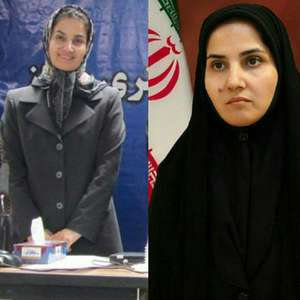September 01, 2017

The chador is back as an issue after President Rohani directed his new vice president to abandon her headscarf and jacket and start wearing chadors.
Coming after Rohani failed to nominate any women to serve as ministers in his cabinet, some are questioning the cleric’s campaign promise to bring more women into the government. He named three female vice presidents in his first term, but now has only two.
One of them is Laaya Joneidi, the new vice president for legal affairs, who used to wear a headscarf and a long coat with trousers, which meets the legal standard of the dress code. But ideologues in the regime disdain such fashion and prefer the all-enveloping chador, which Ayatollah Khomeini called “the flag of the revolution.”
The controversy began when a government website posted a photograph of Joneidi, who earned a doctorate from Harvard in comparative law and international commercial arbitration, wearing the long black chador, exposing only her face. Then Joneidi gave an interview to the Reformist daily Sharq, in which she laid her fashion shift squarely at the feet of the president.
“Mr. Rohani, because of the protocol of the cabinet, asked me to wear the chador,” she told the newspaper. “I respected his request.”
The critics swiftly turned on Rohani, whose re-election campaign promised women spots in his 18-minister cabinet. The cleric had no women ministers in his first term, and when he announced appointees for his second term, there were again no women among his picks.
“Mr. Rohani, based on what law or your protocol forced Laaya Joneidi to wear the chador?” tweeted Amene Shiraf-kan, a journalist who works at Zanan Emruz (Today’s Women) magazine.
The chador controversy underscores the unwritten protocol rules for those in public office and government in Iran — rules that also affect men. Iranian Foreign Minister Mohammed-Javad Zarif wore a goatee with shaved cheeks before entering Rohani’s government, but now keeps stubble on his cheeks at all times.
The chador has a long history in Iranian politics. The daughters of Reza Shah Pahlavi famously tossed theirs away in public in the 1930s, before it was officially outlawed in 1935. With Reza Shah’s abdication, there was no longer any dress code. After the 1979 revolution, head-covering became mandatory, with the chador recognized as the preferred fashion.
All the women deputies in the Majlis today wear the chador. In 2000, however, a male lawmaker threatened to beat Deputy Elaheh Koulai if she didn’t wear a chador. She stood her ground and stayed with her headscarf.
Soroush Farhadian, a Tehran-based political analyst who backs Reformists, told The Associated Press that not wearing a chador remains a taboo in Iranian politics. By asking Joneidi to wear one, Rohani was trying to avoid a confrontation with hardliners, he said. “The taboo was broken by Koulai in the Majlis, but it is not broken at the government level yet,” Farhadian said.
In the latest wrinkle in the dress code debate, Ayatollah Abol-Hassan Mahdavi, a member of the Assembly of Experts from Esfahan, said that abandoning the chador is bad for a woman’s health and those who only wear the headscarf can expect all sorts of intestinal disorders.